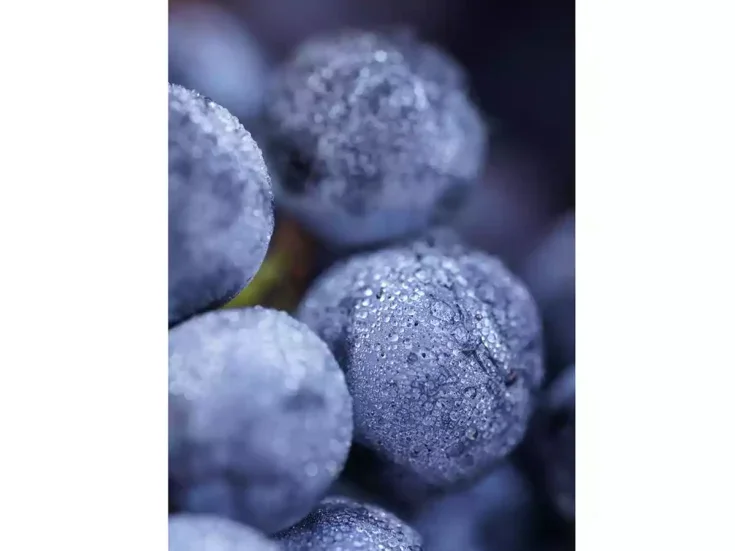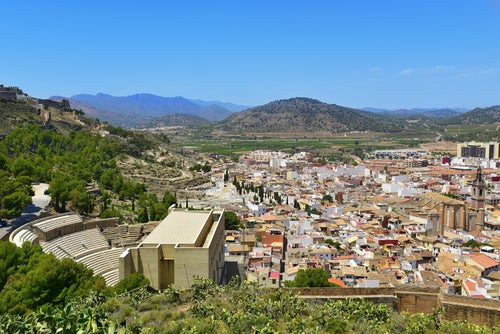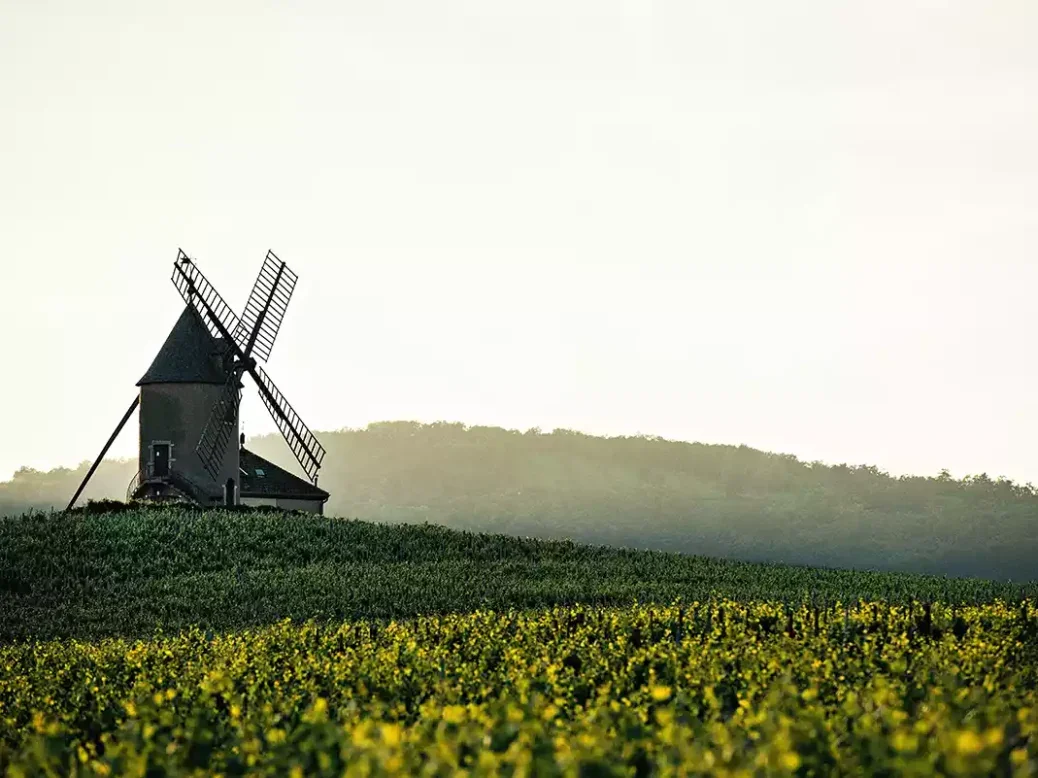
A century after it became one of France’s first AOCs, Moulin-à-Vent has applied to elevate its top sites to premier cru status. But how many of the lieux-dits in the proposal are worthy of promotion? Sarah Marsh MW reports.
Don’t talk about technique, nor of variety or of ideology; speak to me of terroir. Terroir seemed to be the leitmotif behind the invitation to Moulin-à-Vent, in Beaujolais, to celebrate the producers’ application to the INAO in April 2024 to upgrade their best vineyards to premier cru status. I joined a group of wine writers assembled to mark the occasion, which also celebrated the 100th anniversary of the Moulin-à-Vent appellation. Created in April 1924, this was among the first AOs in France. The appellation encompasses the vineyards that lie around and between the villages of Chénas and Romanèche, and it was named not for a village, but for the local windmill, perched on a hill midway, in the hamlet of Thorins.
By happy chance, it is also 150 years since Antoine Budker classified the vineyards (in 1874), ranking them as first, second, or third class. Budker’s pick of the bunch—his premiers crus classés—were these seven vineyards: Aux Caves, Carquelin, La Rochelle, Les Thorins, Les Vérillats, Moulin-à-Vent, and Rochegrès. The current Moulin-à-Vent premier cru application, however, runs to 14 lieux-dits (named vineyards or climats). These are generally, but not exclusively, on hilltops or slopes facing south or east, where the topsoil is thin.
Moulin-à-Vent is a land of granite, often pink granite with high levels of silica and quartz. In the topsoil, the granite is degraded into a rough, sandy material in which the shiny quartz and silica, and in some places the red pigment of iron, are clearly visible in a scooped handful of earth. Much has been made of the manganese in the soil, ostensibly responsible for the firm structure of MAV, which has a reputation as the most tannic and austere in the pantheon of Beaujolais crus, but biologist Marc-André Selosse dismisses this out of hand. “We can forget the manganese. It’s not allowed into the party.”
This is also a land of hills, and let’s not forget the wind. Hence the mill, which historically ground the grain from fields below Romanèche. The northwest wind helps to keep the vines healthy, but it also concentrates the grapes—not always a good thing in recent hot vintages. From a vantage point south of the mill, Édouard Parinet, whose family bought Château du Moulin-à-Vent in 2012, points out the ridge that runs from the windmill to Chénas, either side of which many of the best vineyards are to be found. The hill of the windmill itself gives the encircling lieux-dits multiple aspects: Facing north and moving round to the east is the lieu-dit of Moulin-à-Vent itself; on the foothill, La Roche faces east, while Carquelin is south-facing.
We’re not talking big hills here—baby hills, in fact, since the highest vines are rarely found above 900ft (275m), with slopes of 6 to 7%, which is gentle by comparison with the steep hills of Chiroubles. Parinet explains the importance of this modest gradient. Although the topsoil is thin and poor at the top of the hills, the gentle slopes retain some fine clay content from the colluvial wash. On steeper slopes this would have deposited at the bottom, on the flatter parts, while in MAV these deeper soils are principally alluvial. The granitic hillsides, where the topsoil ranges between 10 and 28in (25–70cm) in depth, represent 53% of the appellation, while the topsoil on the more colluvial and granitic foothills varies from 20 to 60in (50–150cm).
The terroir must certainly contribute to the perception of MAV as the most austere and punchy Beaujolais cru, but perhaps, as Philippe Guérin suggests, history and winemaking practices also play a part. I met with Philippe and his daughter Elisa for lunch in Chénas, where Famille Guérin has been tending vines for four generations at Domaine du Moulin d’Éole. Philippe started bottling a little wine in 1985, but when Elisa returned from Paris as a trained agronomist in 2019, she began domaine-bottling in earnest. She’s a talented young winemaker who works organically, producing fresh, fruity, and energetic wine. I particularly like her Moulin-à-Vent from the lieu-dit of Thorins, which has bitter-chocolate notes, with appealing snap and tension in both hot and cool vintages. Elisa retains plenty of leaves on her gobelet vines to shade the fruit, and she points out that Gamay hangs onto its acidity even in hot years. In the 2020 and 2022 vintages, the pH (in the wine) didn’t exceed 3.5, and in a cooler vintage, 3.2 is typical.
Philippe Guérin feels that wine from Chiroubles is typically more austere than MAV, and he ponders over the history of viticulture in Chénas, where most growers traditionally sold to négociants. Following World War II, from the 1940s until the 1980s, he recalls there were numerous small négociants in the region who would buy wine from single parcels in foudres (larger barrels) from growers. After maturing the wine, the négoce would bottle them under the vineyard name. Things changed from the 1980s when, Philippe says, winemaking became a more industrial process concentrated in the hands of a few négociants. In Moulin-à-Vent, Maison Georges Duboeuf, established in 1964, is a familiar name. The négociants were not so interested in single vineyards and blended everything together to a village style. Even today, the majority of growers (approximately 200 of the 250) prefer to sell to négociants, rather than produce their own wine from just a hectare or so (2.5 acres) of vines.
Guérin believes that this is why the recognition of single vineyards waned. Conversely, Morgon benefited greatly from the influence of Marcel Lapierre. “He had the vision to show there is great terroir, and he led the way, giving the growers in Morgon the confidence to bottle their own wine as single vineyards for export.”
MAV may not have a Lapierre-like visionary, but it is benefiting from the influx of outside investment and know-how. About 150 of the 630ha (370 of the 1,550 acres) of MAV is owned by incomers, Côte d’Or producers among them. Jadot led the way, purchasing Château des Jacques in 1996. More recently, high-profile producers including Thibault Liger-Belair and Louis Boillot have drawn attention to MAV, and the marketing prowess and global reach of Albert Bichot (Domaine de Rochegrès) are also spreading global recognition.
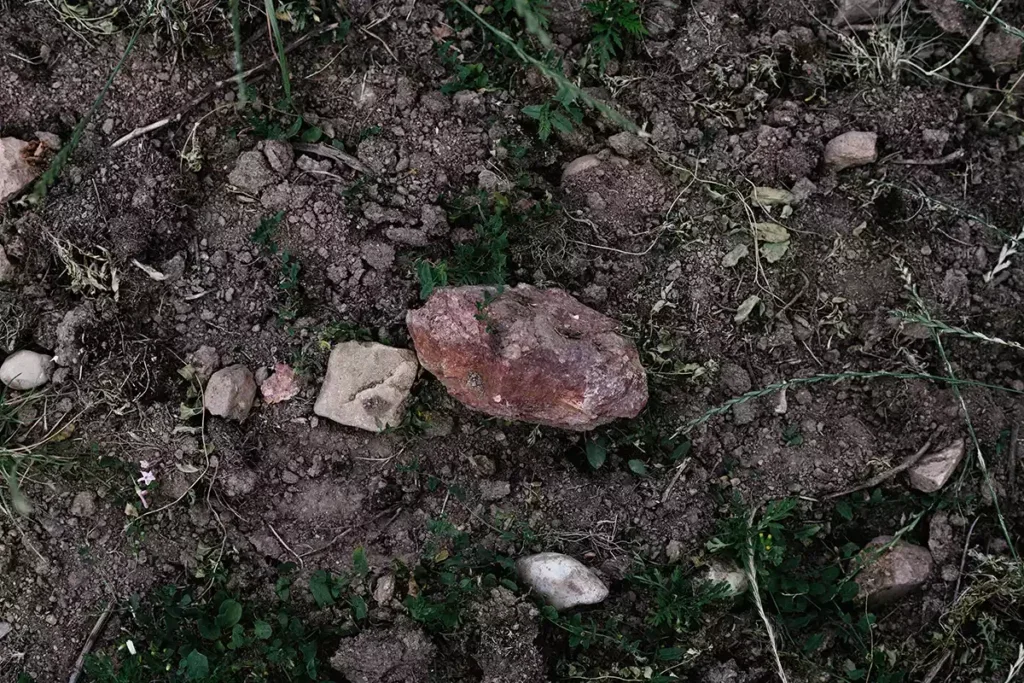
Principled viticulture and sensible vinification
During the visit, the conversation often turned to organic practices and low-intervention winemaking. All good stuff, and I applaud those going the extra mile by lovingly and laboriously tending their fragile old gobelet vines with a horse-drawn plow. At Domaine de Colette, Pierre-Alexandre Gauthier keeps his own Comtois, a draft horse from the Jura, rising at 4am in the summer so that the work is finished by 10am, after which it’s too hot for her. This dedication can’t be economically justified at Beaujolais price points. It’s a passion to work vineyards this way.
Morgon led the way and carved a niche in the market with natural winemaking, but these days you can’t move in the wine world without tripping over natural wines with funky labels aimed at a hipster crowd. If the MAV producers want to differentiate their wines, that horse bolted long ago. They need to focus on the expression of their terroir.
As for carbonic maceration, it’s worth digressing only to explain why producers should not use it. Carbonic maceration was the signature of the Beaujolais. However, today it’s no longer relevant, because nobody comes anywhere near a true carbonic maceration—thank heavens. Even where 100% whole-bunch is used (and many prefer to partially or fully destem, especially in colder or wetter vintages), the bunches at the bottom of the tank are crushed under the weight from above, releasing juice. Many producers don’t submerge the cap with the traditional grill but keep it wet by pumping over a small amount of fermenting juice. It’s really just a common or garden light extraction. And for that matter, the temperature is quite cool, most producers not exceeding 79ºF (26ºC), again not to extract too much.
There is definitely a fear of extracting green elements from Gamay stems, which don’t lignify in the same way as Pinot Noir stems. But maybe it is not so bad to take something from the stems. Elisa Guérin believes that the stems are responsible for the light bitterness I found attractive in her Thorins. And elsewhere when I found this appealing bitterness—for example, in the 2020 Carquelin from Domaine Labruyère, where they use punch-down in addition to pump-over—it produced a more appetizing and complex wine, offsetting the richness of a ripe vintage.
Admittedly, there were many wines I tasted over the few days that had slightly confected cherry fruit from some intercellular fermentation, a character reminiscent of children’s sweets. I don’t mind just a hint, but I don’t want carbonic maceration to smack me on the nose and be the overriding impression on the palate. That’s style-led wine.
So, don’t tell me about the proportion of carbonic maceration and submerged caps. Please, no. Though I’m happy to hear about how the wine is aged.
I confess I generally preferred the wines aged, at least partially, in oak. Not new oak, though, which easily marks the wine, but older oak, whether barrels or foudres. Elisa Guérin “washes” hers first with white wine, while at Château du Moulin-à-Vent, they use saignée wine. At Domaine de Colette, I tasted Le Mont (AKA Rochegrès) from the 2020 vintage, aged in stainless steel and in barrels of 228 liters and 300 liters. It was the same wine. The first was gregariously fruity, with a happy-go-lucky personality, while the second, aged in barriques, had put on a suit and was dressed for business. Any new oak, particularly in the 2020 vintage, which is concentrated and rich, can accentuate the weight, while some older oak boosts the freshness and tension. Many are using larger formats of 300 and 600 liters.
I suppose I am saying that Gamay can be a little lacking in structure; perfectly charming as a straightforward village-level MAV, but some oak aging is preferable in wine presenting as premier cru. The expression is more serious.
It’s an opportunity, however, not a restriction, to have just one grape variety. Like Pinot Noir, Gamay is not a showoff. It’s a lens for the terroir.
A celebration of terroir diversity and potential
Forming an impression of the taste profile of the aspirant premier cru wines was not easy. We began in a hotel with more than 100 MAV samples to taste in two hours. I didn’t taste everything and found it impossible to select from the unnumbered bottles those from the same vineyard (and many were blends), in an attempt to compare and get to grips with the expression of terroir. And the notes accompanying each wine were mostly about winemaking. If this was a tasting to demonstrate terroir and showcase the best climats, the producers took their eyes off the prize slightly.
I did, however, subsequently visit several producers, and from the melee of samples over the two days I have pieced together some impressions of the principal lieux-dits.
There are some lieux-dits from which only one or two producers make wine. Carquelin, for example, is produced only by Domaine Labruyère and Château des Jacques, which begs the question: “How will INAO assess the vineyard in terms of tasting?” INAO evaluates using five criteria, with a potential total score of 44 marks. This includes ten marks for “historical notoriety.” “Some vineyards have been mentioned since the 15th century,” explains Marc-André Selosse. “Contemporary notoriety,” which can garner up to ten marks, includes “claims for locality, including when the name first appeared on the label,” Selosse adds. “There are a further four marks for economic evaluation, which should be 10% above the average.” But there are a whopping 15 marks for tasting. Bearing in mind that the appellation hierarchy will recognize the potential of a particular vineyard, it must be difficult to assess, on the basis of only one or two expressions, whether that potential is fulfilled; it may be excelled in the hands of a good producer or poorly represented by someone less apt. Moreover, some domaines I visited had a definite, even dominant, house style. Well, thankfully, it is not for us to judge.
We can still hazard a guess, however, that not all the nominated vineyards, which represent one third of the total, will pass muster. Two or three may not reach the podium in this round of applications, and some larger vineyards, including Le Mont and La Rochelle, which encompass varied terroirs, are likely to be upgraded only in part. Those with vines in an excluded parcel will be unable to use the name, effectively downgrading some vineyards, as happened in Pouilly-Fuissé when premiers crus were officially recognized there. There will be many winners, but also some losers.
MAV’s celebration of its premier cru application will certainly have raised awareness of its wines, even if the terroir message was not communicated as clearly as it might have been. Nevertheless, the above notes indicate the diversity and potential of the terroir in MAV, and there is no lack of skilled winemakers to express it—both homegrown talent and intelligent incomers.
My tasting debunked the stereotype of MAV as pugilist Beaujolais. It was clear that single-vineyard wines run the gamut from light and mineral, straight and fine-boned, all the way to firmly structured, punchy wine needing time to mellow. I couldn’t help but notice, though, that examples from the lieu-dit of Moulin-à-Vent were among the most structurally compact and austere, suggesting that the eponymous vineyard might be responsible for MAV’s general reputation.
The full list of lieux-dits up for promotion is as follows: Au Michelon, Aux Caves, Carquelin, Champ de Cour, Chassignol, La Roche, La Rochelle, Les Perelles, Les Rouchaux, Les Thorins, Les Vérillats, Moulin-à-Vent, Rochegrès, and La Tour du Bief. I tasted sufficient samples of five of these vineyards to form an opinion. Among these, La Rochelle and Champ de Cour had the most consistent expression, while Rochegrès came in a variety of guises. The producers showed the 2020, 2021, and 2022 vintages. 2020 is very concentrated and rich, and it can be overripe. 2022, another hot vintage, is less concentrated and fresher, while 2021 was cooler and wet.
Roundup of select lieux-dits
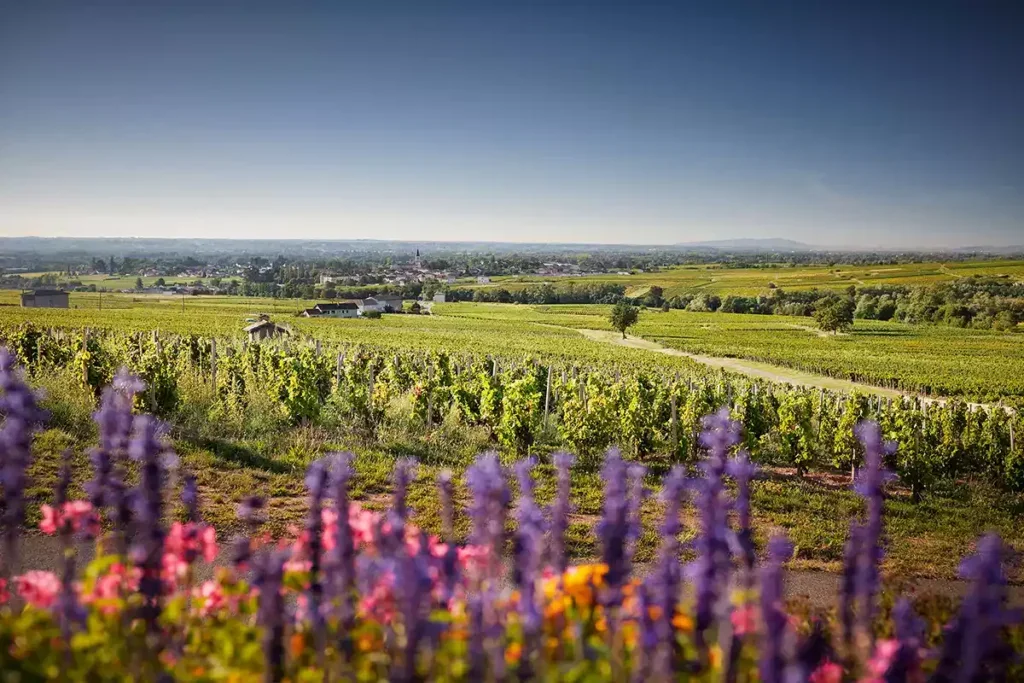
La Rochelle
This 18.84ha (46.55-acre) lieu-dit produces wine with a sunny disposition. Some examples were positively plush and expressively fruity up-front, but La Rochelle refines across the palate, with no lack of tension, to a fresh and straight finish, which is sometimes saline. Engagingly fruity, but not without elegance. The climat lies on the south-facing slope of the ridge and has a thin topsoil of granite decomposed to sand, with deeper fine clays. Château du Moulin-à-Vent has some of the oldest vines here: 0.4ha (1 acre) in the haut part, which they now call Petite Garenne (“little rabbit warren”), because rabbits would burrow in this sandy place. In the 2022 wine, warm aromatics give way to a lively, streamlined palate. Le Nid La Rochelle 2020 is exotically aromatic and rich, while Domaine du Granit 2020 is rounded and smoothly succulent, sliding into a delicate finish. It seems to be a pretty consistent vineyard, with many attractive examples.
Aux Caves
This 23.01ha (56.86-acre) site is among the steeper vineyards. The soil is thin and stony, with a high proportion of silica. Sun reflects off the soil, and yellow cacti grow in places where the bedrock emerges. It’s south-facing, so the grapes ripen quickly. Despite that, it seems to produce a straight and channeled style, with good tension. More nervy, streamlined, and mineral than La Rochelle, in those I tasted. Domaine Louis Boillot et Fils Aux Caves 2020 is taut and layered. (Boillot and his son Clément also produce Moulin-à-Vent Les Brussellions and Plantier de Favre, wines that glide into the international forum whispering of the refinement and fluidity to be conjured from MAV’s terroir.)
Château du Moulin-à-Vent has a 0.76ha (1.88-acre) parcel within Les Caves which it calls Les Grands Savarins. “It has a very light and dry atmosphere,” remarks Parinet, whose Caves is quite delicate, floaty, and richly floral, with a thread of vibrant minerality. I also liked Domaine du Granit’s crunchy and mineral Les Caves 2020, with its snappy freshness, tension, and ripe raspberry fruit.
Rochegrès
I found it hard to get a grip on this terroir. When compared to La Rochelle in the same cellar, it had less red fruit and easy engagement, but it was more compact and savory, with graphite minerality and some muscle. For example, Le Nid Rochegrès 2022 (from 100-year-old vines) is firmly structured and punchy, if a touch too oaky. Domaine de Colette 2020 Rochegrès Cuvée Julienne shares this profile. Albert Bichot turns out a sapid and lively Rochegrès in 2022 from Domaine de Rochegrès. But I also tasted weedy versions, while others were rather simple and fruity. The name is interchangeable with Au Mont or Le Mont, and this is a large, 35.25ha (87.1-acre) climat, some of which is south-facing, and the granite is pink. It’s probable that only part will become premier cru, and that this will be designated as Rochegrès.
Moulin-à-Vent
A lieu-dit as well as the name of the AO. Confusing, I know. This 8.72ha (21.55-acre) vineyard lies largely on the north-facing side of the ridge. It’s a cool terroir on thin soil. Parinet finds that “the whole vineyard benefits from the adjoining park of trees and is well protected from the winds because it is inside the hamlet of Les Thorins. Maturity happens regularly, but very slowly.” Château du Moulin-à-Vent has a 0.54ha (1.33-acre) parcel, Clos de Londres, which makes a dense, savory, and vigorous wine. Patenôtre’s Domaine de la Sionnière Moulin-à-Vent 2022, aged in barrique and foudre, is firmly structured, with an attractive bitterness.
Le Clos du Moulin-à-Vent is a 0.92ha (2.27-acre) east-facing monopole of Domaine Labruyère, which was first bottled under this name in 1898 by Dr Tajan, a cousin of the current owners. Edouard Labruyère says it is very different from the rest of the Moulin-à-Vent lieu-dit, where they own a total of 2.3ha (5.7 acres). “The soil is pure granite, and the rock is 20cm [8in] from the surface. It is our most ‘Bourguignon’ wine.” With some punch-down and matured in 600-liter oak barrels, this offering, from very old vines, some of which are ungrafted, is grippy and layered. With marked austerity, it repays aging—as was demonstrated by a tasting of several vintages.
Champ de Cour
The style is full, broad, rounded, and juicy. Some examples are quite robust. It is a large vineyard, 28.2ha (69.7 acres), only part of which is likely to be elevated to premier cru. At the foot of the hill, lying below Thorins, it’s almost flat, on a 3% slope tilted south, and the soil here is quite deep, consisting of decomposed granite, white alluvial clays, and loam. In the 2020 and 2022 vintages, Champ de Cour can taste pretty ripe, but the clay holds some moisture, so there is freshness to balance. Domaine de la Sionnière Cuvée Amphore 2020 is ample and luscious, with abundant black fruit.
At Le Nid, they pick it early and use concrete eggs to retain freshness. Domaine Labruyère’s version is punchy and full-bodied. (In comparison, its Carquelin, which is south-facing, with sandy clay and pink granite, feels much more mineral and refined.) Elisa Guérin puts Champ de Cour into her attractive blend, La Vigne de Mon Père, but in 2023 she made it separately for the first time, and the broad, dense sample from tank (half is aged in older oak) looks promising.
Les Thorins
Elisa Guérin describes this 16.29ha (40.25-acre) vineyard as “south-/southeast-facing, lower on the slope, quite warm, and very windy, with a deep soil of decomposed granite, becoming clay-like, with iron oxide.” Historically, the vineyard was so highly regarded that it was chosen to append the village name Romanèche, creating Romanèche-Thorins. I tasted too few samples to judge, although Famille Guérin wine from Les Thorins demonstrates that this climat can produce MAV of depth and intensity, with a high quality of tannin.
A few of the best of the rest
There are a total of 71 climats or lieux-dits in MAV, some of which are made as single cuvées, while many are blended. There are good winemakers making lovely wines from some more obscure parcels.
Here, to finish, are a few examples.
Paul Janin’s Héritage is a blend of two lieux-dits with deep soils of decomposed granite: South-facing Les Burdelines, where Janin says the 100-year-old vines contribute purity and precision, and southeast-facing Les Greneriers, providing body and depth. The 2020 Héritage is sumptuous, with a smooth, satin texture, while the 2022 is fresher and more energetic. Occasionally, Janin makes Greneriers as a single-vineyard wine. The 2020 has depth, spice, and cool savoriness. He reflects, “When I till the soil after the rain, the granite is warm, and with the humidity I have the special sensation of graphite.”
Zest Of was established in 2021 by Parisian chemist Denis Falaize, who makes 1,500 bottles from a single vineyard, Les Burdelines, with 80-year-old vines. Very little extraction and short maceration produce a delicate, light-bodied wine.
Domaine du Clos du Fief, in the neighboring village of Juliénas, inches into MAV with Les Deschanes, a lieu-dit on the very edge of the appellation. The Deschanes 2020 is tangy, the light bitterness contrasting with the concentrated raspberry fruit from these 100-year-old vines. The relatively high altitude, of around 1,000ft (300m), no doubt contributes to its lively profile.


